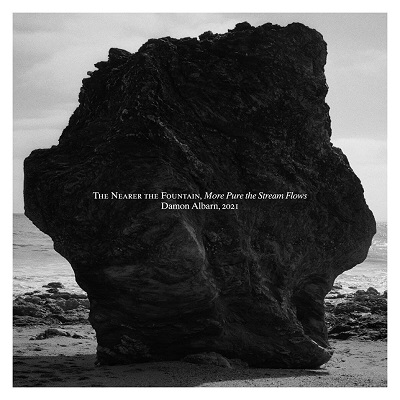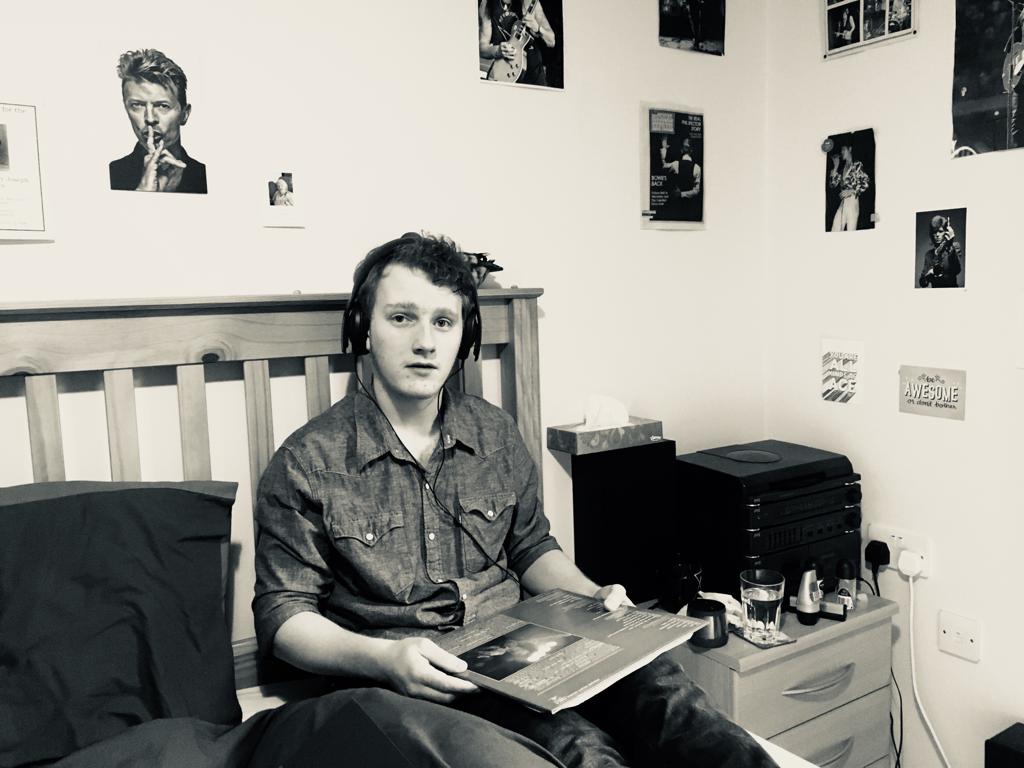Album Review: Damon Albarn – The Nearer the Fountain, More Pure the Stream Flows
3 min read
A lot of artists who have been putting out music for a number of years, after finding what brings them fans and money, stick with it, releasing the same kind of music over and over again. Not that there is anything wrong with that, but perhaps the sign of a true artist in its purest sense is the talent and even just the desire to experiment with different styles. Damon Albarn is unquestionably one of these artists, having been behind Britpop royalty Blur, virtual band sensation Gorillaz and now his latest solo album The Nearer the Fountain, More Pure the Stream Flows.
 As with the confusing title, the intro to the title track which opens the album holds you in suspense and anticipation of what the newest project by the multi-faceted Albarn is going to bring. The suspense is barely assuaged though, with the pulsating electronic backing remaining ever-present, inducing the realisation that Albarn is summoning his inner Brian Eno to create atmospheric music, while adding silky smooth vocals onto the noise, which just so happen to be delivered with some stupefying melodies and motifs which join satisfyingly with the beautiful chord changes. There are even murmurs of Bon Iver in the musicality and production, which makes the mournful lyrics more impacting.
As with the confusing title, the intro to the title track which opens the album holds you in suspense and anticipation of what the newest project by the multi-faceted Albarn is going to bring. The suspense is barely assuaged though, with the pulsating electronic backing remaining ever-present, inducing the realisation that Albarn is summoning his inner Brian Eno to create atmospheric music, while adding silky smooth vocals onto the noise, which just so happen to be delivered with some stupefying melodies and motifs which join satisfyingly with the beautiful chord changes. There are even murmurs of Bon Iver in the musicality and production, which makes the mournful lyrics more impacting.
The experimental nature continues throughout the album. It is not just sentence structure Albarn has taken liberty with, but rather solid musical structures as a whole, with the strangely named tunes featuring experimental electronic music that at times borders on avant-garde, creating waves of sound that floats through the songs, transporting you to another world. Second track The Comorant provides a good example of this experimental and mysterious music which, along with Albarn’s phrasing, and at times lower register voice heard in this song, makes one think of later Bowie.
Royal Morning Blue on the other hand is much more groovy thanks to the electronic-sounding snare which forms the core of the beat along with great electronic bass. If you have an adjustable EQ, you’ll definitely be reaching to boost the bass on this one! In line with the title of subsequent track Combustion, this instrumental is a very chaotic kind of experimental, whereas Daft Wader which follows has been kept more stripped around the edges to focus on the soft piano, which along with the vocals cause you to compose memories from another life.
Other than Combustion, there are two more instrumental tracks which contrast with the former. Listening to Esja, as with the title track, with which it shares the same intro and musical background, one is left wondering where the song is going until finally noticing the haunting strings which have subtly crept into the mix; long drawn-out high-pitched notes that penetrate your exterior. The final instrumental Giraffe Trumpet Sea is again different but features smooth piano and some exotic guitar.
Given the fluid electronic experimentation that permeates the album, it may seem incongruous to think of any of the songs on this Albarn project to include saxophone. And indeed, on the face of it, this is true, yet the warm brass sound that is heard in The Tower of Montevideo and Polaris has been mixed well enough that it works nicely with the electronic backdrop. This is in addition, in the case of Polaris, to the backing vocals that fill the mix like chanting, making the track feel bigger. These vocals join forces perfectly with the drums for the last chorus that eventually blends into the sax solo that ends the track. It is this song and this song alone that gives any sort of hint that the album was penned and performed by the same man that gave us so many Blur hits.
As for the rest of the tracks on The Nearer the Fountain, More Pure the Stream Flows, there is a beauty to be found in the ambience Albarn has created with his electronic experimentation and entrancing vocals. Yet with such sparse use of these vocals and an absence of distinct musical structuring, some may be left with a frustrating feeling of incompleteness and lacking.




